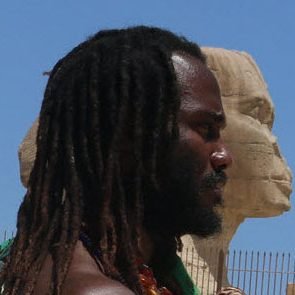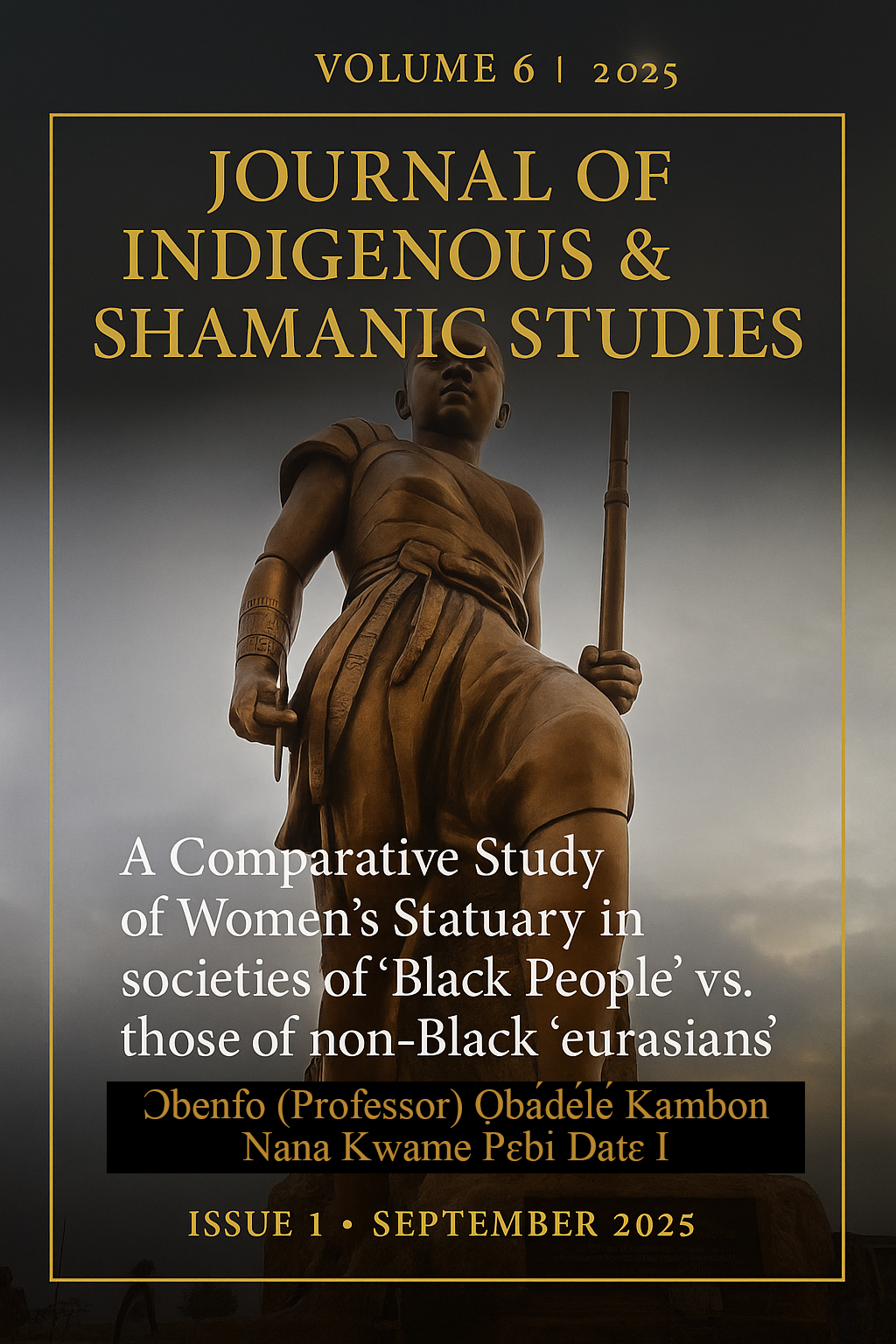A Comparative Study of Women’s Statuary in societies of Kmt(yw) ‘Black People’ vs. those of non-Black ꜥꜣmw ‘eurasians’.
Kambon, Ọ. (2025). A Comparative Study of Women’s Statuary in societies of Kmt(yw) ‘Black People’ vs. those of non-Black ꜥꜣmw ‘eurasians’. Journal of Indigenous and Shamanic Studies, 6(1), 1-21.
This article refutes the ꜥꜣmw ‘eurasians’-centric assertion of a universal scarcity of women’s statuary across time and geography (Baugher & Jameson, 2025). Anchored in the “Restoration of Maat” conceptual framework—rooted in the declaration from the Prophecy of imAxw Nfrti ‘imAxw Neferti’ that iw mAat r iit r st.s ‘Maat will come to her throne’, and isft drti r rwti ‘isft expelled to the outside’—it challenges the premise that women have been historically underrepresented in visual culture. Instead, it demonstrates that such scarcity is a specific feature of ꜥꜣmw ‘eurasian’ societies and is not generalizable to societies of Kmt(yw) ‘Black People’ or other classical and contemporary Abibifoɔ ‘Black’ civilizations. Employing a five-part comparative methodology—assessing scale, posture, placement, symbolism, and sociocultural function—this study analyzes visual and material evidence from Kmt ‘The Black Nation/Land of the Blacks’, kSi ‘Kush’, the Yorùbá, Akan, Dogon, and Nyamwezi. It highlights representations of women as sovereigns (b.a., Sobekneferu Ra, Tiye, Amanirenas), divinities (b.a., Ọ̀ṣun, Yemọja, Ọya), and symbols of fertility and regeneration (b.a., Akuaba, Namji/Namchi, Nyamwezi mother figures). Findings confirm that societies of Abibifoɔ ‘Black People’ consistently represent women as integral to spiritual, political, and cultural order, in direct alignment with the worldview of mAat ‘Maat’. By contrast, societies of ꜥꜣmw ‘eurasians’—shaped by diametric opposites, alienation, and dichotomous logic—either minimize or malign women’s roles in statuary. The article concludes that what has been framed as a global phenomenon is, in fact, a parochial condition of eurasian visual culture. It argues for the urgent need to re-center the lived realities, cultural logic, and representational traditions of Abibifoɔ ‘Black People’ to correct distortions in global art historical narratives.


Leave a Reply